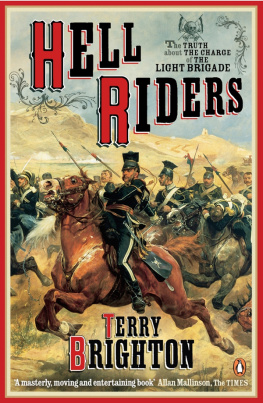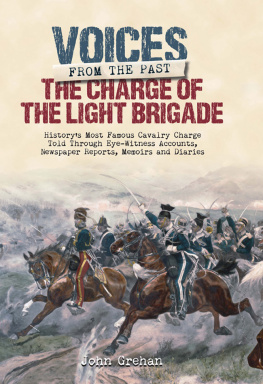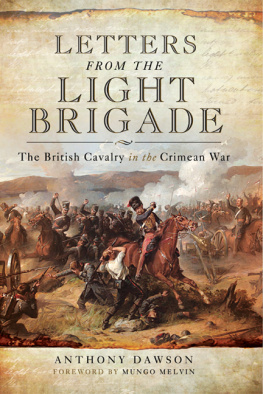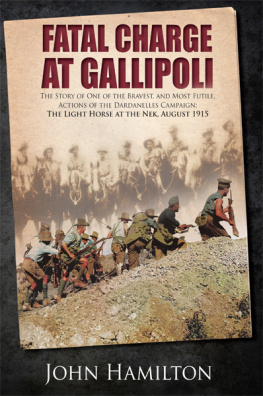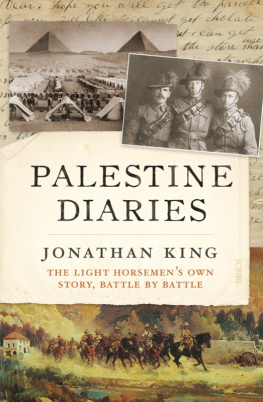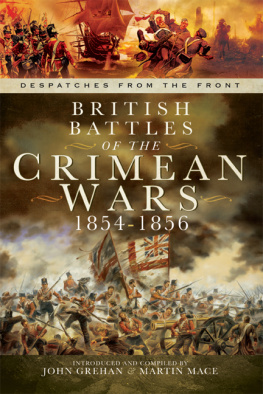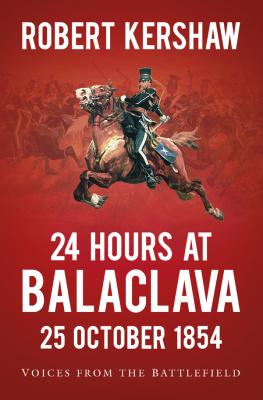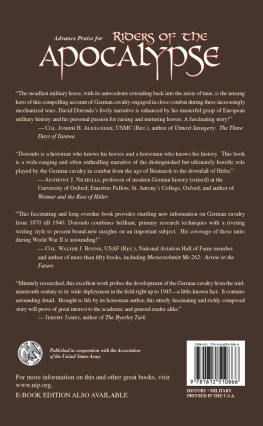Contents
Terry Brighton
HELL RIDERS
The Truth about the Charge of the Light Brigade
VIKING
Published by the Penguin Group
Penguin Books Ltd, 80 Strand, London WC2R 0RL , England
Penguin Group (USA) Inc., 375 Hudson Street, New York, New York 10014, USA
Penguin Group (Canada), 90 Eglinton Avenue East, Suite 700, Toronto, Ontario, Canada M4P 2Y3 (a division of Pearson Penguin Canada Inc.)
Penguin Ireland, 25 St Stephens Green, Dublin 2, Ireland (a division of Penguin Books Ltd)
Penguin Group (Australia), 707 Collins Street, Melbourne, Victoria 3008, Australia (a division of Pearson Australia Group Pty Ltd)
Penguin Books India Pvt Ltd, 11 Community Centre, Panchsheel Park, New Delhi 110 017, India
Penguin Group (NZ), 67 Apollo Drive, Rosedale, Auckland 0632, New Zealand (a division of Pearson New Zealand Ltd)
Penguin Books (South Africa) (Pty) Ltd, Block D, Rosebank Office Park, 181 Jan Smuts Avenue, Parktown North, Gauteng 2193, South Africa
Penguin Books Ltd, Registered Offices: 80 Strand, London WC2R 0RL , England
www.penguin.com
First published 2004
Copyright Terry Brighton, 2004
Cover image: The Charge of the Light Brigade by Richard Caton Woodville. Courtesy of The Queens Royal Lancers Regimental Museum
Cover design: EstuaryEnglish
The moral right of the author has been asserted
All rights reserved.
ISBN: 978-0-141-91398-8
THE BEGINNING
Let the conversation begin...
Follow the Penguin Twitter.com@penguinukbooks
Keep up-to-date with all our stories YouTube.com/penguinbooks
Pin Penguin Books to your Pinterest
Like Penguin Books on Facebook.com/penguinbooks
Listen to Penguin at SoundCloud.com/penguin-books
Find out more about the author and
discover more stories like this at Penguin.co.uk
By the Same Author
The Last Charge: The 21st Lancers and the Battle of Omdurman
To R.E. and E.L.
In a moment they were gone:
Like a sudden spark
Struck vainly in the night,
Then returns the dark
With no more hope of light.
Alfred, Lord Tennyson, Maud
List of Illustrations
First Section
Assistant Surgeon Henry Wilkin, 11th Hussars. Photograph by Roger Fenton, 1855
Balaklava harbour. Photograph by James Robertson, 1855
Balaklava harbour seen from the end of the wharf. Photograph by Roger Fenton, 1855
Balaklava seen from the cavalry camp at Kadikoi. Photograph by Roger Fenton, 1855
Looking out across the Balaklava plain from the cavalry camp at Kadikoi. Photograph by Roger Fenton, 1855
Field kitchen of the 8th Hussars. Photograph by Roger Fenton, 1855
Camp of the 4th Dragoon Guards. Photograph by Roger Fenton, 1855
Captain Henry Duberly (8th Hussars) and his wife, Fanny. Photograph by Roger Fenton, 1855
Officers and men of the 8th Hussars. Photograph by Roger Fenton, 1855
General Lord Raglan, commander-in-chief of the British Army in the Crimea. Photograph by Roger Fenton, 1855
Lieutenant General Lord Lucan, commanding the Cavalry Division
Major General Lord Cardigan, commanding the Light Brigade
Captain Louis Nolan, 15th Hussars, who carried the order from Lord Raglan to Lord Lucan. Drawing by an unknown artist
His Highness Prince Menshikov, commander-in-chief of the Russian Army in the Crimea
Lieutenant General Liprandi, in command of the Russian attack on Balaklava on 25 October 1854
Colonel Prince Obolensky, commanding the Don Cossack battery charged by the Light Brigade
The Thin Red Line. Photogravure after Richard Gibb published by Archibald Ramsden, London, 1883
The Charge of the Heavy Brigade. Oil painting by Godfrey Douglas Giles, 1897
Second Section
Lord Raglans order to the cavalry
The bugle blown by Trumpeter Billy Brittain to sound the charge of the Light Brigade, and the bugle blown by Trumpet Major Henry Joy to sound the advance of the Heavy Brigade
The Death of Captain Nolan. Oil painting by Thomas Barker, 1855
The Charge. Oil painting by C. E. Stewart
The mle behind the guns. Illustrated London News, 18 November 1854
The Roll Call. Lithograph after Richard Caton Woodville, 1890
The Charge of the Light Brigade. Tennysons first draft of his poem
Alfred, Lord Tennyson
William Russell, war correspondent of The Times. Photograph by Roger Fenton, 1855
The Valley of Death. Photograph by Roger Fenton, 1855
Four survivors of the charge photographed in August 1855 after their return to the cavalry depot at Brighton
Private Benjamin Soley, who rode in the charge with the 17th Lancers
Letter describing the charge written by Private Soley
Survivors of the charge with Butcher, one of the few horses to live through both the charge and the winter that followed and to return home
Survivors of the charge photographed with Buffalo Bill (Colonel William Cody) at Earls Court, London, in 1903
Illustration Acknowledgements
The author and publishers are grateful to the following for permission to reproduce illustrations: 1, 310, 289, Fenton Collection, Library of Congress, Washington, DC; 2, 1113, 17, 20, 235, 303, 35, The Queens Royal Lancers Museum, Belvoir Castle; 1416, Sevastopoltsy, St Petersburg; 1819, National Army Museum, London; 21, National Gallery of Ireland, Dublin; 22, Cavalry and Guards Club, London; 267, Tennyson Research Centre, Lincoln; 34, Wrexham County Archives.
List of Maps
Acknowledgements
A number of organizations and individuals have helped in the preparation of this book. I would like to thank the staff of the Reading Room at the National Army Museum, without whom most research into the Victorian soldier would prove impossible, the Ministry of Defence Information and Library Service and the Public Record Office (now the National Archive) at Kew. The present regimental museums of the original Light Brigade regiments have given their assistance and support: The Kings Royal Hussars, the Light Dragoons, The Queens Royal Hussars and The Queens Royal Lancers. I am especially indebted to the several members of the Crimean War Research Society whose advice and comments have been both informed and helpful. My wife Janet spent many hours working on the roll of officers and men who charged at Balaklava.
Special thanks must go to those who read the final manuscript in full and offered their expert advice: Michael Hargreave Mawson, whose encyclopedic knowledge of the Crimean War is unrivalled, and my colleague at The Queens Royal Lancers Museum, Captain Mick Holtby, who once again placed his specialist knowledge of the cavalry at my disposal. Thanks also go to my agent Luigi Bonomi for making the right decision while I was without a phone in Greece, and to Eleo Gordon at Penguin for her belief and guidance (and for surviving the cannonball).
All of the above have helped to make this a better book than it could otherwise have been, though the opinions expressed and any faults that remain are my own. Finally, it does not seem out of place to acknowledge as my co-authors the twenty or so survivors of the charge who wrote first-hand accounts of their hell ride at Balaklava. No words of mine could conjure up the reality of the charge as surely as theirs, and it is to them that I owe the greatest debt.

